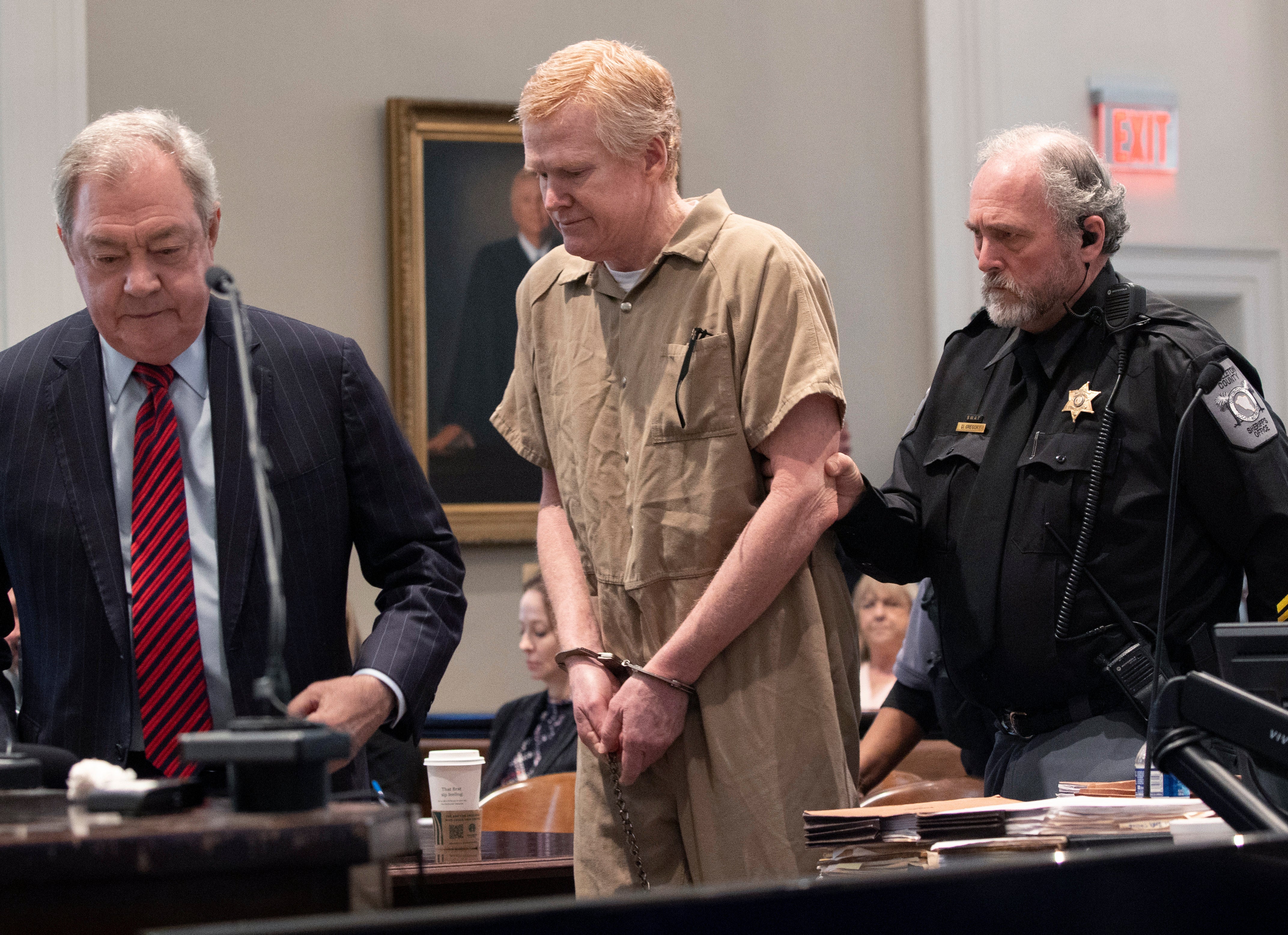Why did Alex Murdaugh kill his wife and son? Here’s the motive presented by prosecutors
Murdaugh has been convicted of shooting dead Paul and Maggie at the family estate in South Carolina. But why did he do it?
Alex Murdaugh will now spend the rest of his years behind bars after being sentenced to life in prison for the heinous double murder of his wife Maggie and son Paul.
The disgraced attorney was handed two sentences of life without parole on Friday in a case that has rocked the community in Hampton County, South Carolina, and captivated America for the best part of two years.
Jurors took less than three hours to reach their unanimous verdict, deciding that – beyond any reasonable doubt – Murdaugh killed his wife and son that fateful night.
On 7 June 2021, Maggie and Paul were brutally gunned down by the dog kennels on the powerful family’s vast 1,700-acre Moselle estate.
Murdaugh shot his son, 22, twice with a 12-gauge shotgun while he stood in the feed room of the dog kennels – the second shot to his head blowing his brain almost entirely out of his skull.
After killing Paul, prosecutors said Murdaugh then grabbed a .300 Blackout semiautomatic rifle and opened fire on Maggie as she tried to flee. She was shot five times including twice in the head after she had fallen to her knees.
But why did he do it? Why did he slaughter his wife and son? What was his motive?
Prosecutors laid out the motive for the murders throughout the six-week trial – a motive that jurors appeared to agree with in convicting him of murder.
The state pinned much of the motive on Murdaugh’s escalating financial crimes, arguing that he killed his wife and son to distract from what later transpired to be a decade-long multi-million-dollar fraud scheme – at a time when it was on the brink of being exposed.
On the day of the murders, jurors heard testimony of how he was confronted by Jeanne Seckinger, the CFO at his law firm PMPED, about missing payments.
Murdaugh had stolen the money from the firm and his clients – and didn’t have the money to pay back.
Three days after the murders, a hearing had also been scheduled for the lawsuit over the 2019 fatal boat crash involving Paul.
One night in February 2019, Paul was allegedly drunk driving the family boat when it crashed, killing 19-year-old Mallory Beach.

While Paul was facing felony charges over the incident, Murdaugh was being sued by the Beach family and their attorney had filed a motion to compel to gain access to his finances.
The hearing was the next step in the lawsuit with Beach family attorney Mark Tinsley testifying that this was the start of Murdaugh’s crimes unraveling.
To some extent, the plan worked for a short time.
After the murders, the probe into his missing payments and the boat crash lawsuit went away for a while, jurors heard.
Mr Tinsley testified that he instantly knew there may be no longer a case if the disgraced attorney was the “victim of an unspeakable tragedy”.
Ms Seckinger also revealed that she and the other law firm clients stopped looking into the missing payments after the murders – as they sought to rally around their colleague and friend.
Three of the jurors who convicted Murdaugh of the murders told NBC’s Today show that they believed it was likely not “one singular thing” that motivated him to kill.
Instead, they said they thought there were several factors at play including the disbarred attorney’s slew of financial crimes.
“He wanted to have control of everything – his wife owned the majority of the things that they owned – so I’m thinking it was more like greed and being in control,” Gwen Generette said.
Juror Amie Williams added: “I don’t know if we’ll ever know. I think it may have been a combination of things, not just the financial, but everything was weighing heavy on him.”
In the end, the murders didn’t stop the financial crimes coming to light.
Now, Murdaugh is facing another 99 charges for stealing at least $8.7m in settlements from dozens of legal clients he represented at PMPED.
Among the slew of charges are counts of: fraud, attempted tax evasion, money laundering, embezzlement, obtaining signature or property by false pretenses, forgery, insurance fraud, and conspiracy to commit insurance fraud.
Aside from his life sentences for murder, he is also facing up to 700 years in prison on these financial fraud charges.




